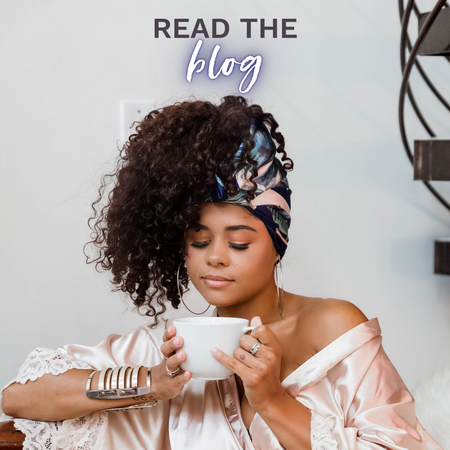Protective styles should help reduce breakage, retain length, and promote overall hair health. However, improper preparation and maintenance can lead to issues such as dryness, breakage, and scalp infections. Follow these pro tips to keep your hair and scalp healthy and happy.
Pre-Installation Preparation
1. Start with a Clean Slate
Before installing a protective style, it's crucial to thoroughly cleanse your hair and scalp. This helps remove product buildup, dirt, and excess oil, creating a healthy environment for your style. Use a sulfate-free shampoo to avoid stripping your hair of its natural oils, and follow up with a deep conditioner to restore moisture.
-
Pro Tip: Consider using a clarifying shampoo once a month to ensure all buildup is removed. Follow with a deep conditioning treatment to keep your hair hydrated.
2. Deep Condition Your Hair
A deep conditioning treatment is essential before installing a protective style. It helps to strengthen and moisturize your hair, making it more resilient to the tension and manipulation involved in styling. Look for deep conditioners that contain ingredients like shea butter, coconut oil, and aloe vera.
-
Pro Tip: Apply a heat cap or sit under a hooded dryer for 20-30 minutes to allow the conditioner to penetrate deeply into your hair shafts.
3. Detangle Thoroughly
Detangling your hair before installation is crucial to prevent knots and tangles that can lead to breakage. Use a wide-tooth comb or your fingers to gently detangle your hair, starting from the ends and working your way up to the roots.
-
Pro Tip: Use a leave-in conditioner or detangling spray to make the process easier and reduce breakage.
4. Trim Split Ends
Trimming your split ends before installing a protective style helps to maintain the health of your hair and prevent further breakage. Regular trims also promote healthy hair growth by getting rid of damaged ends.
-
Pro Tip: Schedule regular trims every 6-8 weeks to keep your ends healthy and your hair looking its best.
5. Moisturize and Seal
Moisture is key to healthy hair, especially before installing a protective style. After washing and conditioning, apply a leave-in conditioner to keep your hair hydrated. Follow up with a natural oil, such as coconut oil, jojoba oil, or castor oil, to seal in the moisture.
-
Pro Tip: Pay extra attention to your ends, as they are the oldest and most fragile part of your hair.
6. Choose the Right Stylist
If you're not installing the protective style yourself, it's crucial to choose a stylist who understands the unique needs of naturally textured hair. Look for someone with experience and positive reviews from clients with similar hair types.
-
Pro Tip: Schedule a consultation with the stylist beforehand to discuss your hair goals, preferred styles, and any concerns you might have.
During Installation
1. Avoid Excessive Tension
One of the biggest risks of protective styles is excessive tension, which can lead to traction alopecia (hair loss due to tension). Ensure that your stylist is gentle and does not pull too tightly on your hair and scalp.
-
Pro Tip: Communicate with your stylist throughout the process. If you feel any discomfort or pain, speak up immediately.
2. Use Quality Hair Extensions
If you're using hair extensions, invest in high-quality hair. Cheap, synthetic hair can cause irritation and damage to your natural hair. Opt for human hair or high-quality synthetic hair that mimics the texture and feel of your natural hair.
-
Pro Tip: Soak synthetic hair in a solution of apple cider vinegar and water before installation to remove any chemicals that might cause scalp irritation.
Maintaining Your Protective Style
1. Keep Your Scalp Clean
While your hair is in a protective style, it's important to keep your scalp clean to prevent buildup and infections. Use a gentle, sulfate-free shampoo or a diluted apple cider vinegar rinse to cleanse your scalp every 2-3 weeks.
-
Pro Tip: Use a spray bottle to apply the shampoo or rinse directly to your scalp, then gently massage and rinse thoroughly.
2. Moisturize Regularly
Even with a protective style, your hair still needs moisture. Use a water-based moisturizer or leave-in conditioner to keep your hair hydrated. Follow up with a light oil to seal in the moisture.
-
Pro Tip: Mix water and your favorite leave-in conditioner in a spray bottle for an easy, on-the-go moisturizing spray.
3. Protect Your Hair at Night
Protect your hair while you sleep by wearing a satin scarf, bonnet, or using the Glow by Daye Silk Pillowcase. These materials reduce friction, which helps prevent breakage and preserve your style.
-
Pro Tip: If you have long braids or twists, loosely braid them together or put them in a low bun before covering with your satin scarf.
4. Avoid Overloading with Products
While it's important to keep your hair and scalp moisturized, avoid using too many products, as this can lead to buildup and weigh down your style. Stick to a light leave-in conditioner and natural oils.
-
Pro Tip: Less is more. A little bit of product goes a long way, especially when your hair is in a protective style.
5. Listen to Your Hair and Scalp
Pay attention to how your hair and scalp feel while in a protective style. If you experience any itching, dryness, or discomfort, address it immediately. This might mean moisturizing more often, using an anti-itch spray, or even removing the style earlier than planned.
-
Pro Tip: Tea tree oil and peppermint oil have soothing properties. Add a few drops to your moisturizer or oil for added relief.
Post-Installation Care
1. Give Your Hair a Break
After removing a protective style, give your hair and scalp a break before installing a new one. This allows your hair to recover from any tension or stress and reduces the risk of damage.
-
Pro Tip: Aim to leave your hair out for at least one to two weeks between protective styles.
2. Clarify and Condition
Once you remove your protective style, cleanse your hair and scalp thoroughly with a clarifying shampoo to remove any buildup. Follow up with a deep conditioning treatment to replenish moisture and strengthen your hair.
-
Pro Tip: Use a protein treatment to help rebuild and fortify your hair, especially if you've experienced any breakage.
3. Detangle Gently
After removing a protective style, your hair may be prone to tangling. Detangle gently with a wide-tooth comb or your fingers, and use a leave-in conditioner to make the process easier.
-
Pro Tip: Section your hair and work on one section at a time to avoid unnecessary breakage.
4. Moisturize and Seal
As always, keep your hair moisturized and sealed. After washing and conditioning, apply a leave-in conditioner followed by an oil or butter to lock in moisture.
-
Pro Tip: Create a simple hair care regimen that includes regular moisturizing and sealing to maintain healthy hair between protective styles.
Additional Tips for Healthy Hair and Scalp
1. Maintain a Healthy Diet
Your hair's health is influenced by what you eat. A diet rich in vitamins, minerals, and proteins supports hair growth and strength. Include foods like leafy greens, nuts, seeds, fish, and eggs in your diet.
-
Pro Tip: Stay hydrated by drinking plenty of water, which helps keep your hair and scalp moisturized from within.
2. Protect Your Hair from the Elements
Protect your hair from harsh weather conditions, such as extreme cold or heat. Wear a hat or scarf when needed, and avoid exposing your hair to direct sunlight for extended periods.
-
Pro Tip: Use products with UV protection to shield your hair from sun damage.
3. Avoid Heat Styling
Minimize the use of heat styling tools, such as flat irons and curling wands, as they can cause damage and dryness. If you must use heat, always apply a heat protectant beforehand.
-
Pro Tip: Embrace heat-free styling methods, such as braiding, twisting, or roller setting, to achieve beautiful styles without the risk of heat damage.
Protective styles are a wonderful way to nurture your natural hair while experimenting with different looks. By following these pro tips, you can ensure that your hair and scalp remain healthy before, during, and after your protective style. Remember, the key to maintaining healthy hair is a combination of proper preparation, gentle handling, and consistent care. Embrace your natural beauty



All of this time i’d been natural…i’d been free styling. Then i started searching blogs and researching. I wasted precious time and never knew that I had low porosity 4b/a hair. Thanks for all of this powerful information. I am learning to do a much better job with my hair.
Thanks for these tips! I actually learned some new things about caring for my hair that I didn’t know before.